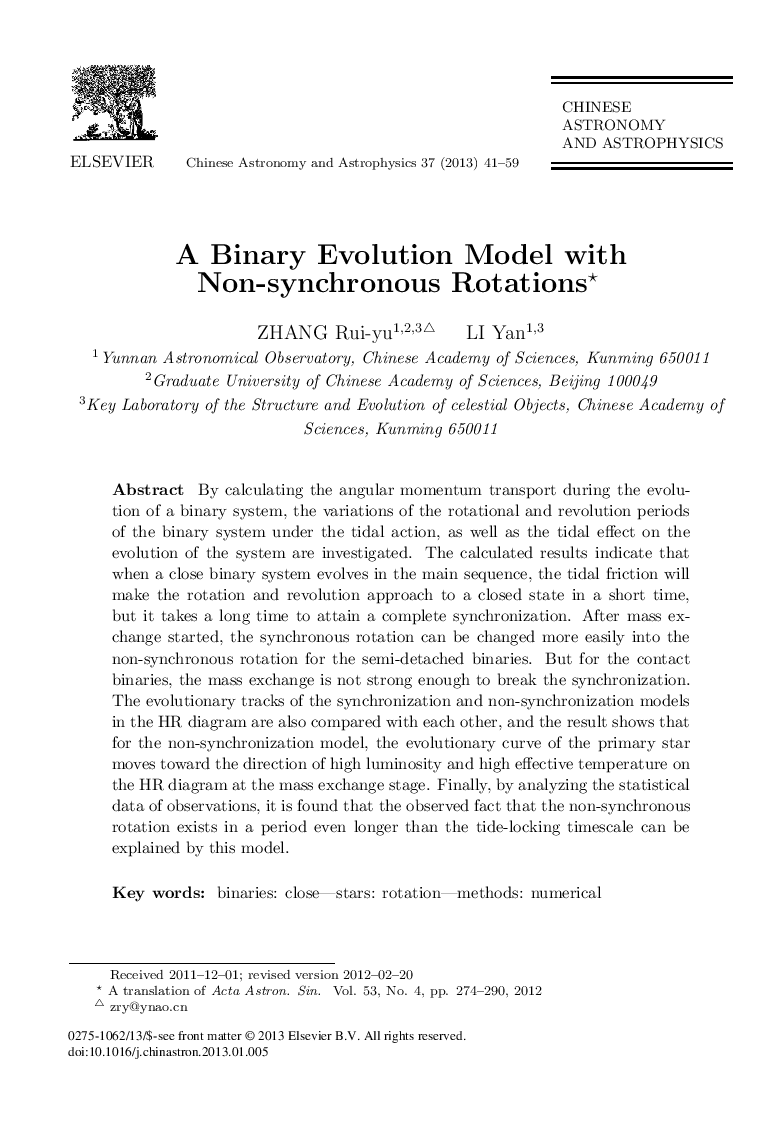| Article ID | Journal | Published Year | Pages | File Type |
|---|---|---|---|---|
| 1771749 | Chinese Astronomy and Astrophysics | 2013 | 19 Pages |
By calculating the angular momentum transport during the evolution of a binary system, the variations of the rotational and revolution periods of the binary system under the tidal action, as well as the tidal effect on the evolution of the system are investigated. The calculated results indicate that when a close binary system evolves in the main sequence, the tidal friction will make the rotation and revolution approach to a closed state in a short time, but it takes a long time to attain a complete synchronization. After mass exchange started, the synchronous rotation can be changed more easily into the non-synchronous rotation for the semi-detached binaries. But for the contact binaries, the mass exchange is not strong enough to break the synchronization. The evolutionary tracks of the synchronization and non-synchronization models in the HR diagram are also compared with each other, and the result shows that for the non-synchronization model, the evolutionary curve of the primary star moves toward the direction of high luminosity and high effective temperature on the HR diagram at the mass exchange stage. Finally, by analyzing the statistical data of observations, it is found that the observed fact that the non-synchronous rotation exists in a period even longer than the tide-locking timescale can be explained by this model.
